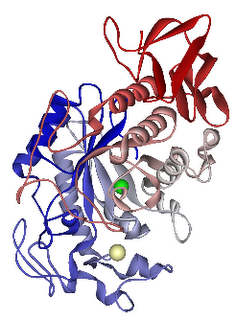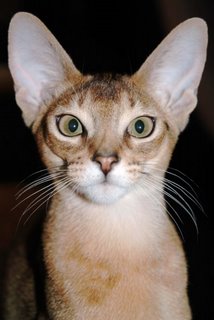
University of California - Santa Cruz: Embargoed for release: 9-Sep-2007 13:00 Eastern US Time
Humans took over the world because of what went on in their mouths, say scientists.
We humans have far more copies of the salivary amylase gene than any of our ape relatives, the study found. We use these copies to flood our mouths with amylase. This is an enzyme that digests starch.
The new findings, published online on 9 Sep in Nature Genetics, support the idea that starchy food, like the potatoes and carrots we eat today, was a very important addition to the diet of early humans.
Extra copies of the same gene mean that more of the enzyme it produces will be made in the mouth, says Nathaniel Dominy, one of the paper's authors. He is assistant professor of anthropology at University of California, Santa Cruz.
This new ability to eat calorie-rich starches could have fed our large brains. It would have opened up new food supplies that fuelled our colonisation of the planet, Dominy says.
Other primates eat mainly ripe fruits. These contain very little starch. So they did not get the same boost to their brain-power.
In their research the scientists sampled saliva from 50 European-American students. They found as many as 15 copies of the amylase gene per person. By comparison, all 15 chimpanzees they sampled had exactly two copies each.
They found that people with more copies of the gene had more amylase in their saliva.
Next the team studied humans with different diets. They found the same connection between the amount of starch eaten and the number of amylase gene copies.
The diet of the Yakut of the Arctic is mainly fish. They were found to have fewer copies of the gene than the related Japanese, whose diet includes starchy foods like rice. The same thing was found in two Tanzanian tribes. They are the Datog, who raise livestock, and the Hadza, who mostly eat tubers and roots.
"Even though they're closely related genetically and live close to each other geographically, still there are big differences in the average number of copies in these populations," Dominy said.
The discovery could greatly improve our understanding of how humans began. Anthropologists have long been stumped by the sudden increase in human brain size, body size and the area they lived in. All these happened at more or less the same time.
Meanwhile other great apes were hardly changing. Early humans simply must have found some source of better food to make it all possible.
"That's the big mystery of palaeoanthropology," Dominy says. "What changed?"
Why did our earliest human ancestors gain an "incredibly large brain, which is very energetically expensive to maintain"?
And why did they become at the same time "a much more efficient bipedal organism"?
For years more meat was thought to be the answer, as early humans learned to hunt. But, Dominy points out, even in human hunter-gatherers today, meat is a small part of their diet.
"They cooperate with language. They use nets. They have poisoned arrows, even, and still it's not that easy to hunt meat."
To think that 2-4 million years ago, our ancestors without any of these things could have done much better "doesn't make a whole lot of sense."
So some anthropologists are starting to think that the new food was starch stored by plants as underground tubers and bulbs. These would have been wild versions of modern-day foods like carrots, potatoes, and onions.
Once early humans learned to recognise these plants, this theory goes, it opened up a whole new food source that was unknown to the other apes.
"It's kind of a goldmine," Dominy said. "All you have to do is dig it up."
Tubers could have been especially important for early humans known as Homo erectus. They may have been the first humans to cook with fire. Since this idea was proposed, researchers have been looking for evidence.
This is not easy for a theory about perishable food eaten two million years ago. But in work earlier this year, Dominy and his colleagues found some. They discovered that the 'isotopic signature' of animals that eat tubers and bulbs today matched that found in the fossil remains of early humans.
This new discovery about amylase genes is another piece of evidence that points to the importance of starch in human origins. When early humans learned the secret of fire, cooking starchy vegetables would have made them much easier to eat. At the same time it would have made extra amylase gene copies more useful.
"We eat French fries and baked potatoes," Dominy says. "When you cook, you can afford to eat less overall, because the food is easier to digest. Some marginal food resource that you might only eat in times of famine, now you can cook it and eat it.
"Now you can have population growth and expand into new territories."
More help with words
absorb
calorie
carbohydrate
cell
complex
conception
DNA
drought
energy
enzyme
fertilisation
hypothesis
inherit
molecule
origins
protein
sperm
tentative
What's it all about?
- This story is all about an enzyme called -------.
- Where in the human body is this enzyme found?
- What does it do?
- The new discovery is that we have far more copies of the gene that makes the enzyme
than our nearest relatives. What are those relatives? - Name two starchy foods we eat today.
- What are you able to do if you have extra copies of the gene that makes amylase?
- Do apes eat food that contains much starch?
- The scientists studied two different types of living thing in their research. What
were they? - Which had most copies of the amylase gene?
- What did the people who had more copies of the gene also have more of?
- After comparing humans and chimps what did the scientists compare next?
- They found that people who ate more ------ had more ------ of the gene for amylase.
- This means they produce more amylase in their ------ so they can digest the starch.
- We know from fossils that in quite a short period of time in the past humans spread
out over a wide area and their brains got bigger. What is the mystery in this? - What did scientists used to think had changed in the human diet to make them big-brained
and "much more efficient". - In one sentence why is this now thought to be not a very likely explanation?
- What do scientists like Dominy and his team now think was the big change in the human
diet? - A change in the human diet was needed because big brains use up a lot of ------.
- This new discovery is another piece of evidence for the importance of starch in early
humans. What other piece of evidence had Dominy and his team discovered earlier? - Why would extra amylase have been less useful if the early humans had not already
discovered how to cook? - If you were a young member of Dominy's team could you think of a question you would
like to answer about early humans and what they ate? - Can you think how you might try to find an answer to that question?
More science resourcesMouth-watering extra genes UK US
Topic for discussion, research or pupil presentationsA) In groups, students should go through the article to find three hypotheses. They should then find one piece of evidence, mentioned in the article, that either supports or helps to refute each of these hypotheses.
This is a valuable exercise to get at the nature of science and scientific thinking, and this particular story is a good one to use for the exercise, since it contains a plentiful number of hypotheses, new findings and statements of accepted fact, some of which shade into each other. This will stimulate instructive and educationally valuable differences of opinion among the students.
B) In groups, students should think about a large band of early humans, most of whom have just a couple of genes to make amylase, just like the other great apes.
It's a fertile part of Africa these people inhabit, and there are lots of wild tubers and bulbs growing there. These would be an excellent source of food, because that is precisely what a tuber is - food for the growing plant.
The people have discovered fire and often cook the food they eat. Sometimes they dig up tubers and roots and roast them on the campfire, but because they don't make much amylase in their saliva, they can't digest these tubers very thoroughly, even when they are cooked, so much of this good food tends to pass through their bodies
without being absorbed. There comes a time however when a baby is born in the group that, by a small mistake in the copying process that takes place when cells divide, has four copies of the amylase gene. As this baby grows up, the rest of the band notices that he seems to love eating cooked wild roots. Because these are plentiful, young grows big strong
and healthy and in due time has many children of his own. The question the student groups have to address, in a 5 minute presentation they prepare together, is this:
A few hundred years later most of the group has four copies of the amylase gene,
and some of them even have eight. How exactly has this come about?
Tips for science class discussions and groupwork
No 62
'A non-commercial source for this sort of activity can be found on the ENSI site at http://www.indiana.edu/~ensiweb/lessons/falsasum.html. It's called "False Assumptions Can Get You in Trouble," developed by OBTA winner and NABT's first Evolution Educator of the Year, Steve Randak. Here's the synopsis for that lesson:
Little deceptive problem stories are presented to the class, and students are challenged to solve each problem by asking only yes/no questions. The key is for students to recognize what the False Assumption is that makes the solution tricky, and that many common problems are difficult to solve because we tend to assume a particular paradigm.
Things are not always what they seem! Science is a way to work around or through those false assumptions.
Strategies for doing this, and a collection of those little "stories" (ready for showing on overhead) are freely provided with the lesson. Many of the stories are similar to those in the MindTrap game. Once this lesson is introduced, the stories make an excellent "sponge" activity that can be used when your class finishes a few minutes early, and you can refresh the reality of nature that things are not always what they seem, and build their critical thinking skills.
Contribution to an NSTA forum for science teachers by Larry Flammer


